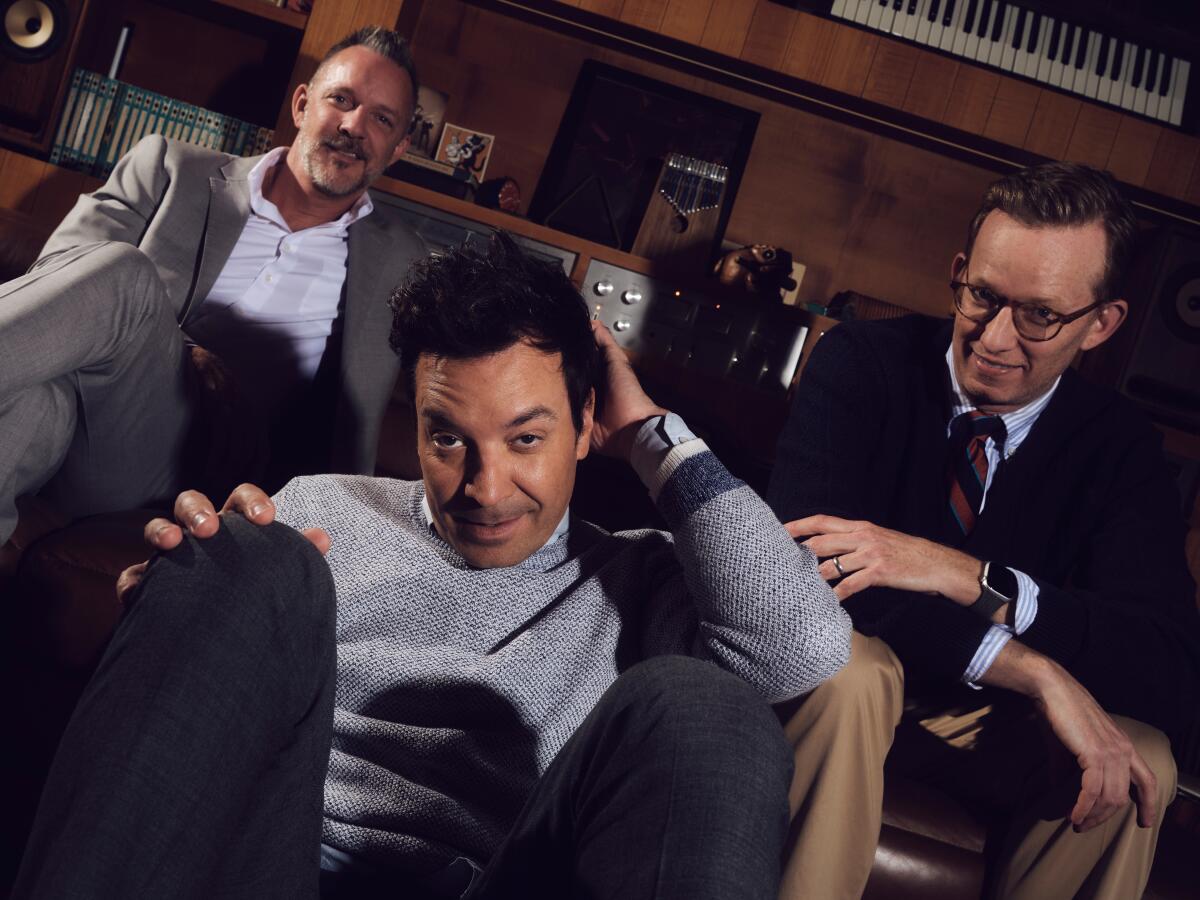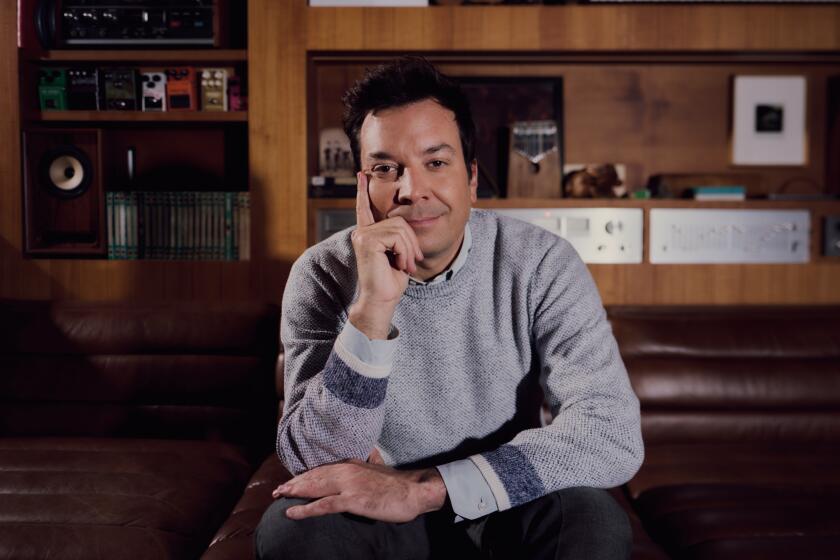A day in the night of ‘The Tonight Show’

It takes nearly 200 people around 10 hours each day to churn out an episode of “The Tonight Show With Jimmy Fallon.” We spent the day with showrunner Chris Miller, who joined in 2022, to watch how the magic unfolds. Follow along.
‘As the years have gone on, I’m more open to things falling down and dealing with that in the moment,’ the late-night host says.
9 a.m.: Start times are loose for the 10 to 12 staff writers; some write their next-day contributions late at night and others come early in the morning. But 9 is the cutoff for monologue sketch ideas.
9:45 a.m.: Having read the submitted sketch ideas, Miller, head writer A.D. Miles and a few others compile them into a packet and hold the morning meeting. Host Jimmy Fallon Zooms into the conversation from home for notes.
10 a.m.: Selected bits that have to be produced for the show go into production in various departments with graphics, voice-over artists, costume, props, etc. “It’s all hands on deck,” Miller says.
Writers get to work in groups, pairs or even solo. A “gang write” might happen in the ping pong room, an oversized conference room featuring a jukebox and the game table that gives the room its name. “What makes for a good writers’ room in general is to allow for people to not feel they’re just throwing creativity into the void,” says Miles. “When you do get something on the air, it’s a rush to hear the audience response.”
10:30 a.m.: An overall production meeting is held in the ping pong room with anywhere from 150 to 170 people squeezed in to go over ratings, general announcements, hiatus weeks and show post-mortems. The new show’s rundown is discussed.
12:30 p.m.: Fallon has an in-person creative meeting with the head writer and producers. They go over the day’s agenda, read through bits, make notes and adjustments. There’s a look ahead to who’s coming on in future shows and what they want to do.
1:30 p.m.: “There are a million meetings that are standard every week,” says Miller, who meets with the talent department or fields calls from publicity reps who want their clients on the show. “They’ll ask for ‘first guest’ [placement], and I’m like, ‘Absolutely not,’” he says. “We’ll offer them ‘second guest,’ and they’re like, ‘Well, they might go with [Jimmy] Kimmel.’” And I’m like, “I want to stick with second.”
3 p.m.: Meeting with Fallon where they read through the entire monologue and tweak it.
3:40 p.m.: Rehearsal with guests in sketches, or with members of the house band the Roots.
4:30 p.m.: Fallon goes back into the final monologue to make any last-minute alterations. There’s a space called the Peacock Room next to the stage, with a sofa, podium and a big TV where he can rehearse. Meanwhile, the audience is loading in.
4:45 p.m.: Fallon greets the guests in the hallways; sometimes there’s a fast digital bit they do for TikTok or another platform.
5 p.m.: The show tapes.
6 p.m.: Taping can end as late as 6:15, but after it wraps, Miller and a few others meet with Fallon for a quick post-mortem. The show is edited to send out.
7:30 p.m.-ish: Miller is finally done (though he may send notes or do more editing as late as 10:30 p.m.) “It’s a solid 11-hour day,” he says. “I come from film production; we used to do 15-,16-hour days. To work an 11-hour day seems like a dream. And I’m lucky to live 10 minutes from [30 Rock]. I’m an early riser and I’m in bed by 10.”
And no, he doesn’t watch the show live. “Sometimes a friend will come early and see the show and we’ll go to dinner afterward. And they’re like, ‘I’m f— exhausted, and I was there for three hours one time. How do you do that?’ I’m like, ‘We do it 200 times a year.’ It’s wild.”
More to Read
From the Oscars to the Emmys.
Get the Envelope newsletter for exclusive awards season coverage, behind-the-scenes stories from the Envelope podcast and columnist Glenn Whipp’s must-read analysis.
You may occasionally receive promotional content from the Los Angeles Times.









